Disclosure: This post may contain affiliate links. I may earn a small commission for my endorsement, recommendation, testimonial, and/or link to any products or services from this website.
This easy no-knead cast iron focaccia is crispy on the outside, soft and chewy on the inside, and finished with flaky sea salt and fresh rosemary.
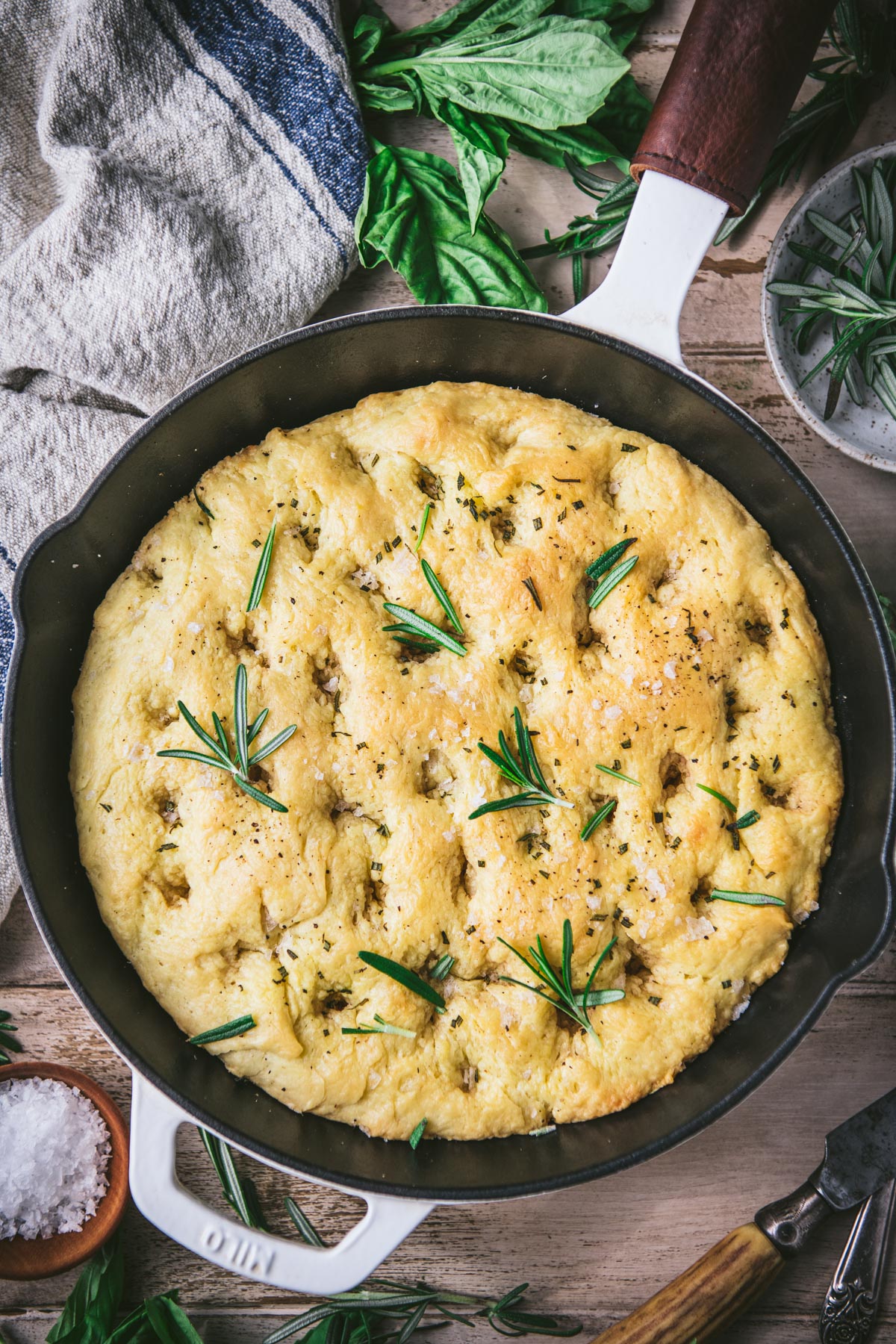
Table of Contents
- What is focaccia?
- Why do you put holes in focaccia?
- A Cast Iron Skillet is the the Secret to Good Focaccia
- Why Didn’t My Focaccia Rise?
- Ingredients for No Knead Focaccia
- How to Make Focaccia in Cast Iron Skillet
- Serving Suggestions
- Cast Iron Focaccia Toppings
- Preparation and Storage Tips
- Recipe Variations
- Tips for the Best no Knead Focaccia Recipe
- No-Knead Cast Iron Focaccia Recipe
Cast iron focaccia is a homemade Italian yeast bread that’s infused with the rich flavor of olive oil, and is a perfect companion for a bowl of soup, a plate of pasta, a hearty salad, or a satisfying panini sandwich. Best of all, the easy no knead focaccia recipe comes out perfectly every time!
What is focaccia?
Focaccia (pronounced fuh·kaa·chuh) is a flat, oven-baked Italian yeast bread. It’s similar in taste and texture to a thick pizza dough, and can be used as an appetizer with dip, as a side dish with dinner, or as sandwich bread.
In Ancient Rome, panis focacius was a flat bread baked on the hearth. The name “focaccia” comes from the Latin focus meaning “hearth, place for baking.” While some believe that the Etruscans first developed a basic focaccia recipe, the bread is now widely associated with the cuisine of Liguria (a region in northwest Italy).
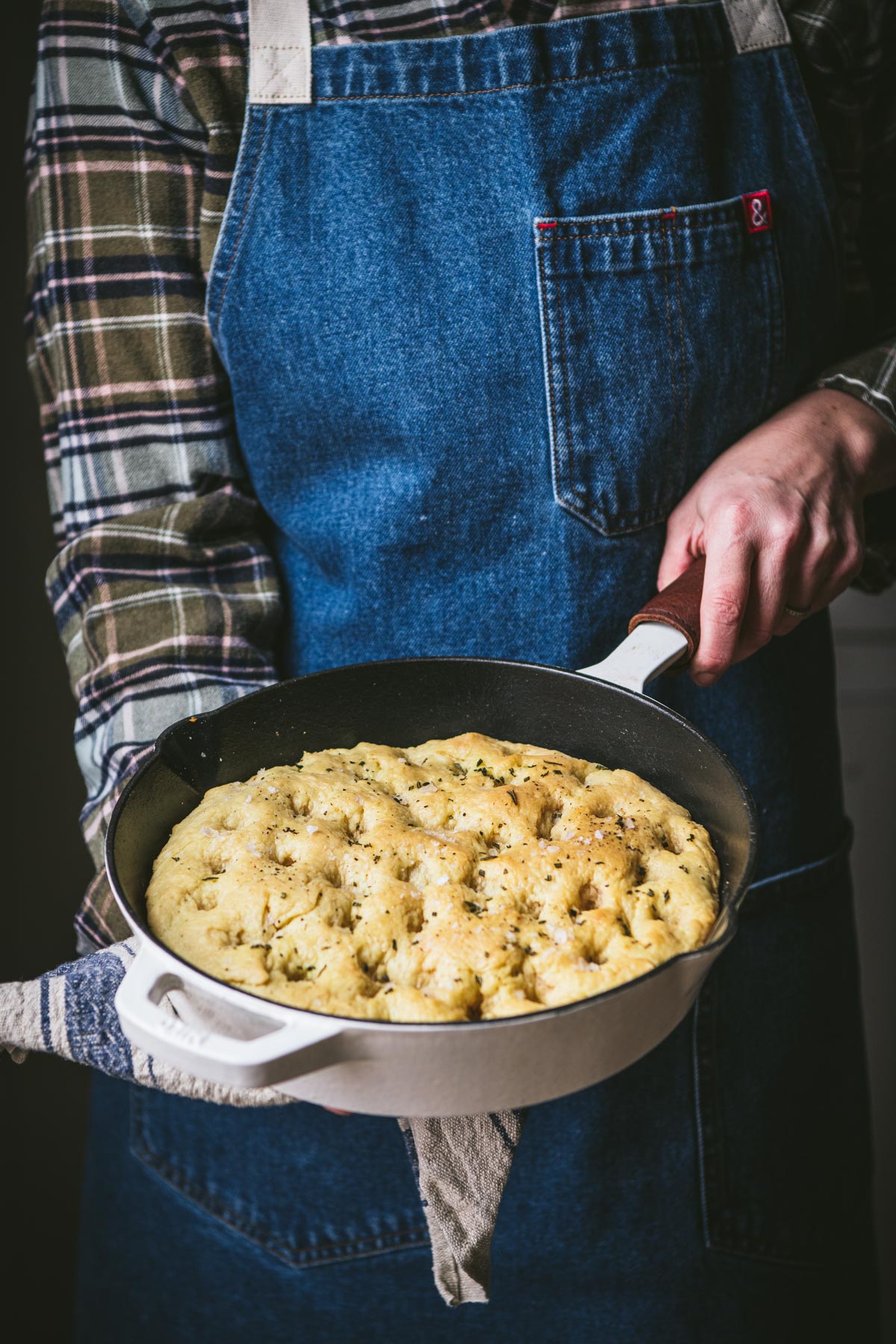
How is focaccia different from bread?
A pan of focaccia is different from a traditional loaf of bread in a few ways. It doesn’t require kneading; it’s flatter, so it cooks quicker and at a higher temperature; it has dimples that hold toppings and seasonings; and it uses a good amount of olive oil. The olive oil keeps the bread exceptionally moist, helps the crust turn crispy and golden brown, and imparts rich flavor.
Why do you put holes in focaccia?
The dimples or indentations on the top of focaccia are one of the bread’s hallmarks — and they serve a purpose! The dimples reduce the air in the dough and prevent the bread from rising too quickly. They also create little pools of olive oil that further enhance the crust’s texture and flavor.
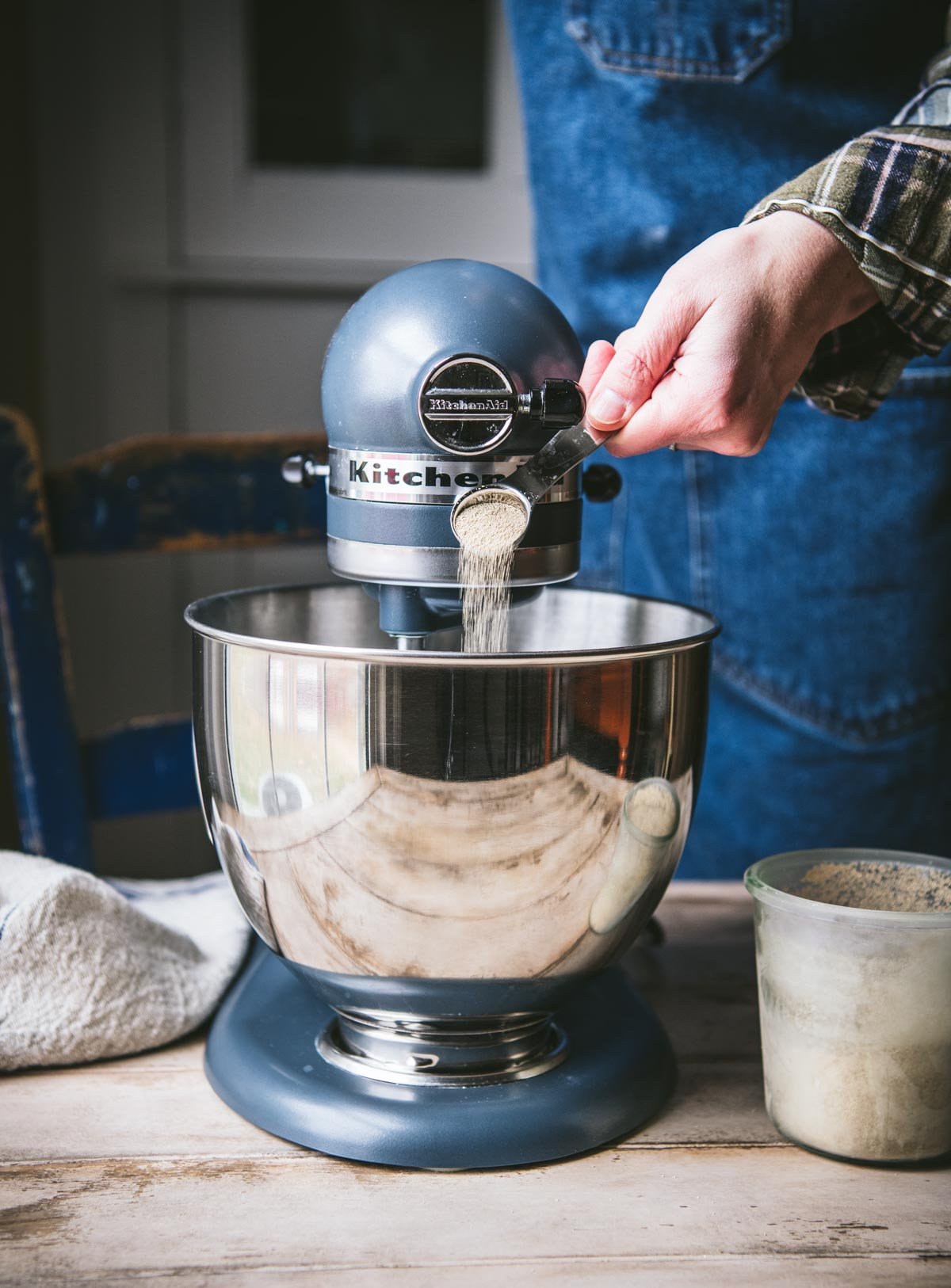
A Cast Iron Skillet is the the Secret to Good Focaccia
While you can certainly prepare a big loaf of focaccia on a rimmed baking sheet, we find that a 10-inch cast iron skillet is particularly ideal for this loaf of bread. Cast iron conducts heat beautifully, so the bread cooks evenly and boasts a super-crispy crust. The smaller 10-inch skillet (as opposed to a 12-inch skillet) yields a thicker small batch focaccia, which is fluffy, moist, and flavorful.
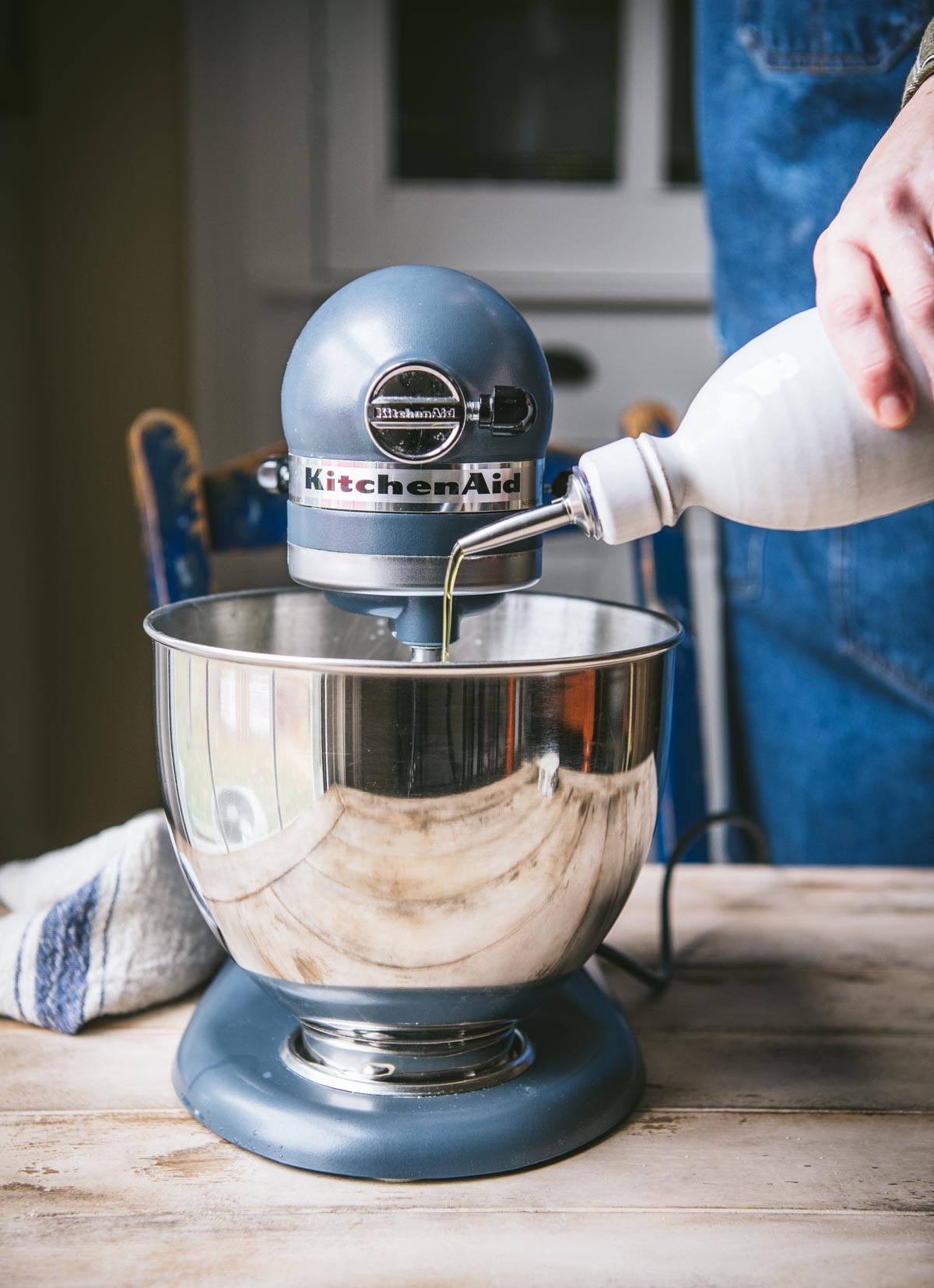
Why Didn’t My Focaccia Rise?
If your bread does not rise properly, it could be due to any number of reasons. For instance, your yeast may not be fresh. Even with a good expiration date, yeast has a short shelf life once a package is opened (I recommend keeping it in the freezer). It’s also possible that your water was the wrong temperature (see my note below regarding water temp), and therefore did not activate the yeast. Find a warm spot for the dough to rise, too!
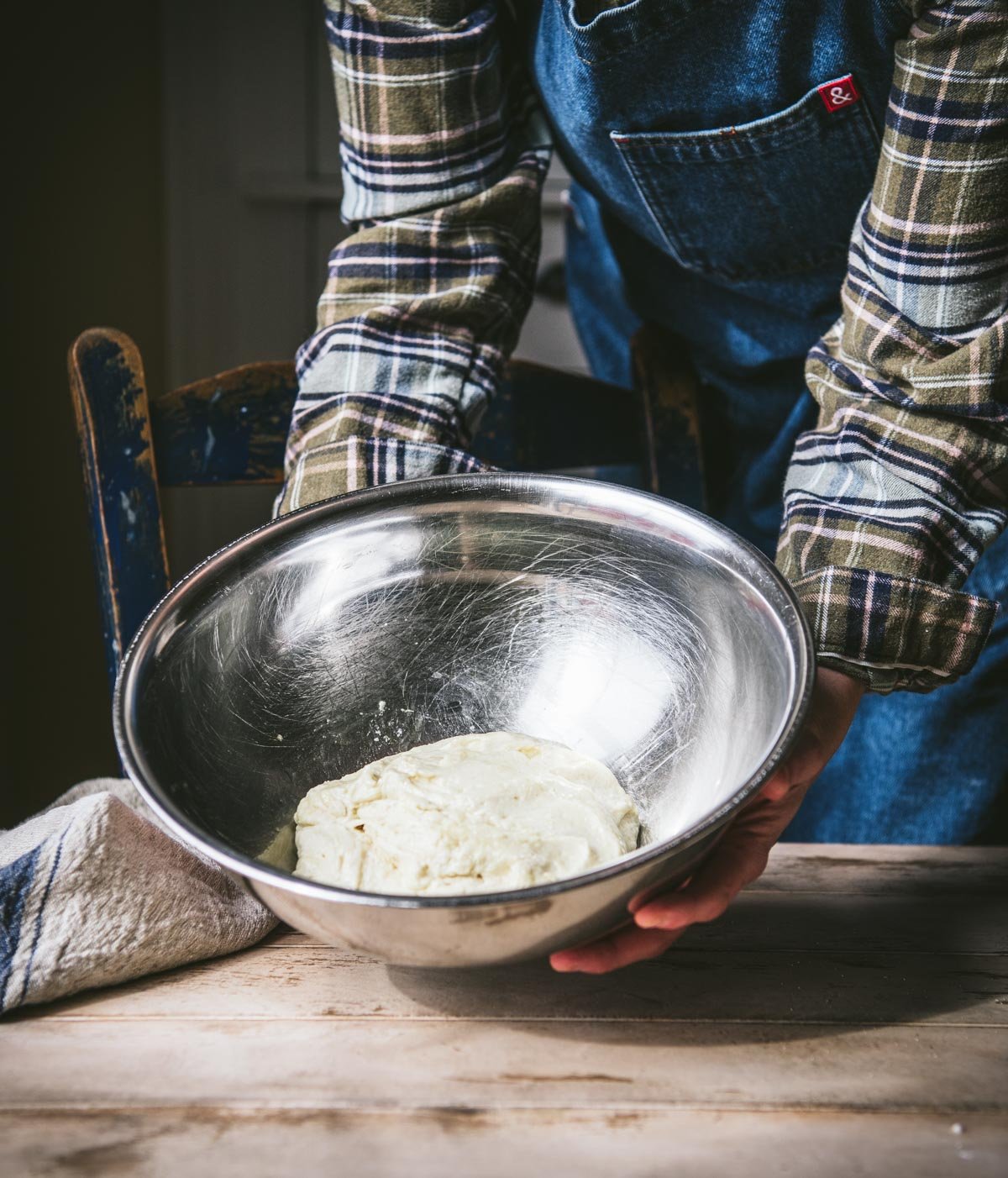
Ingredients for No Knead Focaccia
This is just a quick overview of the ingredients that you’ll need for a small batch focaccia. As always, specific measurements and step-by-step baking instructions are included in the printable recipe box at the bottom of the post.
- Packet of active dry yeast: helps the dough rise
- Warm water: activates the yeast
- Sugar: just enough to feed the yeast
- Milk: gives the bread a richer, more velvety texture and helps it brown
- Extra-virgin olive oil: add the oil to the dough for a richer flavor and on top to give focaccia its trademark crispy, golden exterior
- All-purpose flour: you can also use bread flour in this recipe if you prefer
- Cornmeal: prevents the dough from sticking to the pan
- Kosher salt and ground black pepper: enhance the other ingredients
- Fresh rosemary: a classic topping for a focaccia bread recipe; however, you can substitute with other herbs or toppings (see my notes below)
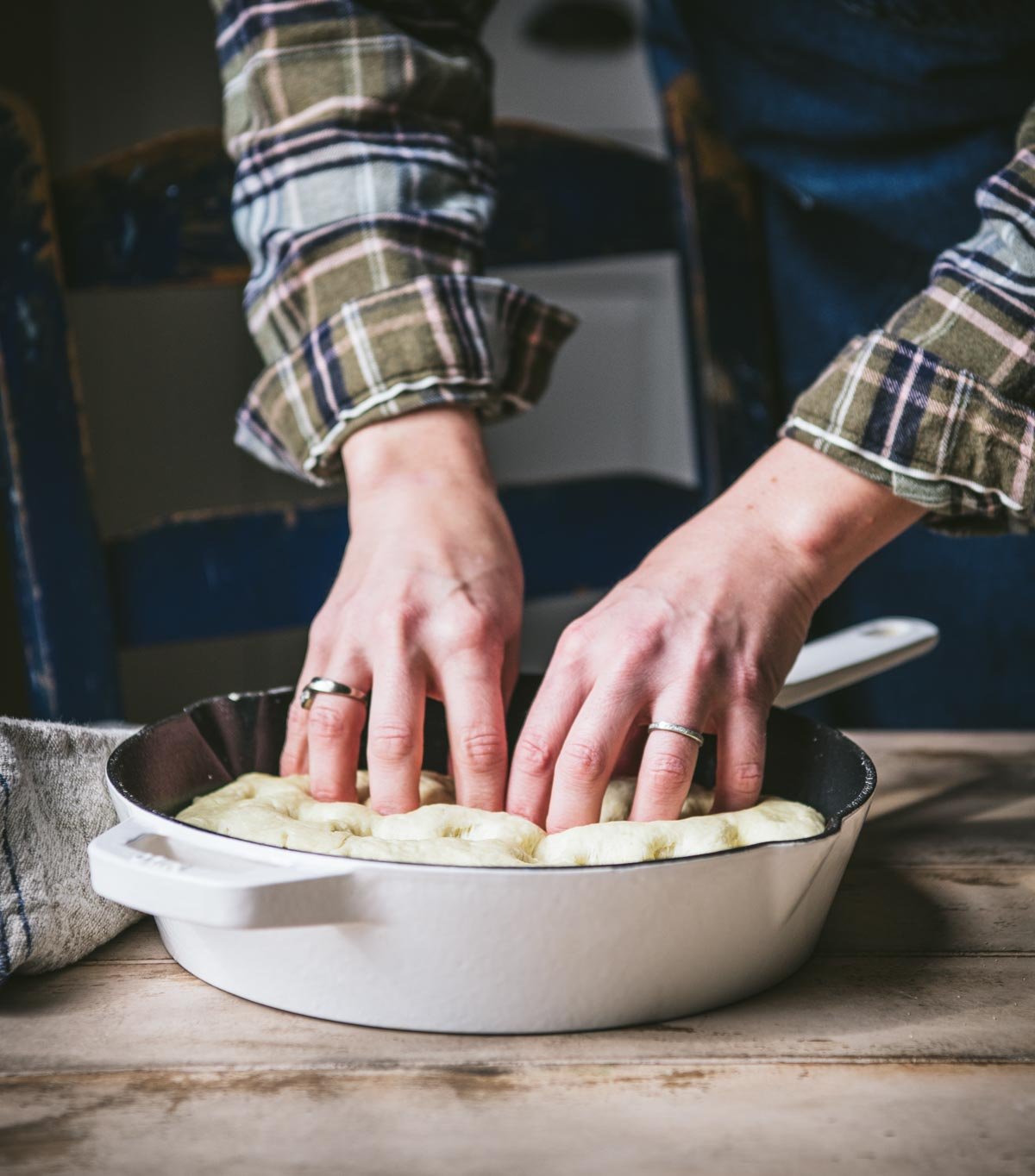
How to Make Focaccia in Cast Iron Skillet
With minimal prep time, this no knead focaccia recipe comes together quicker than many other yeast breads. It’s a perfect starter option for beginning bakers! I’ve included the detailed instructions in the recipe card at the bottom of the post, but here’s the simple overview:
- Proof the yeast in warm water and sugar.
- Mix together the dough.
- Let the ball of dough rise in a warm spot for about 1 – 1 ½ hours.
- Press the dough into a cast iron pan.
- Let the dough rest for 30 minutes while you preheat the oven.
- Use your fingertips to make indentations in the dough, drizzle with olive oil, and sprinkle with coarse sea salt, ground black pepper, and chopped fresh rosemary leaves.
- Bake for about 20 minutes.
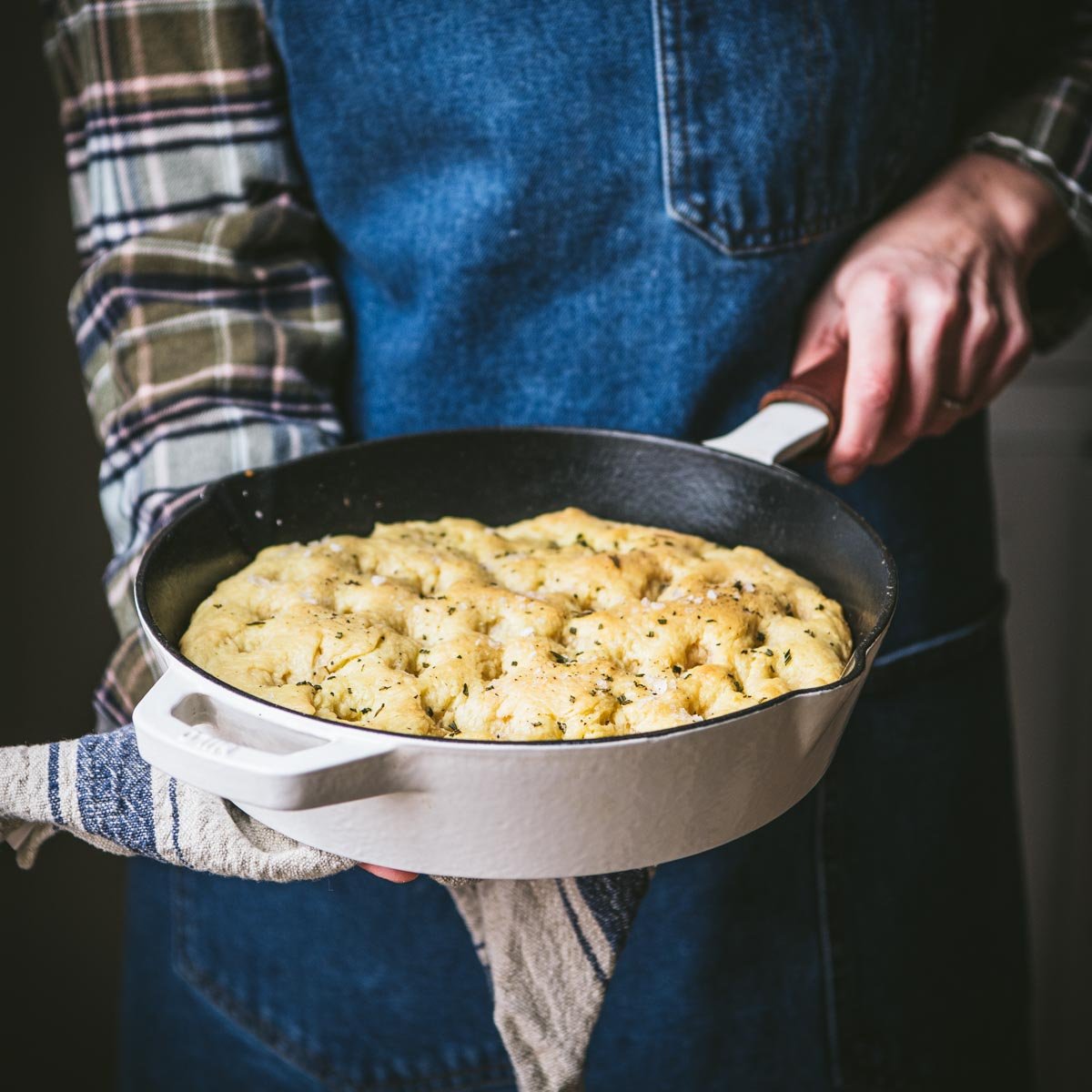
Serving Suggestions
Slice the focaccia into squares, triangles, or long rectangles. Enjoy the bread in any of the following ways:
- Appetizers: Serve the bread as a snack or appetizer on its own, or with an olive oil dip or pesto. It would make a nice addition to a cheese board with cheeses, fruit, olives, and crackers.
- Sandwiches: Since it’s relatively thick, you can slice the bread horizontally and use it to make sandwiches or paninis. Try a simple grilled cheese sandwich, a tomato, basil and mozzarella sandwich, or an Italian sandwich with a variety of Italian meats (like prosciutto, soppressata, mortadella, and capocollo).
- Side Dish: Prepare a bread basket full of focaccia to serve with your next pasta dinner. The bread would be delicious alongside dump-and-bake creamy tomato basil pasta, one-pot chicken and spinach pasta, or sausage and cheese tortellini skillet. Don’t forget to serve it with your next spaghetti dinner, or with any of these delicious pasta bake recipes!
- With Soup: The focaccia is a perfect dipper to pair with a warm bowl of soup. Try serving the bread with Pasta Fagioli Soup, Lemon Chicken Soup with Orzo, Chicken Tortellini Soup, or Tomato Basil Soup. Be sure to check out all of our favorite soup recipes!
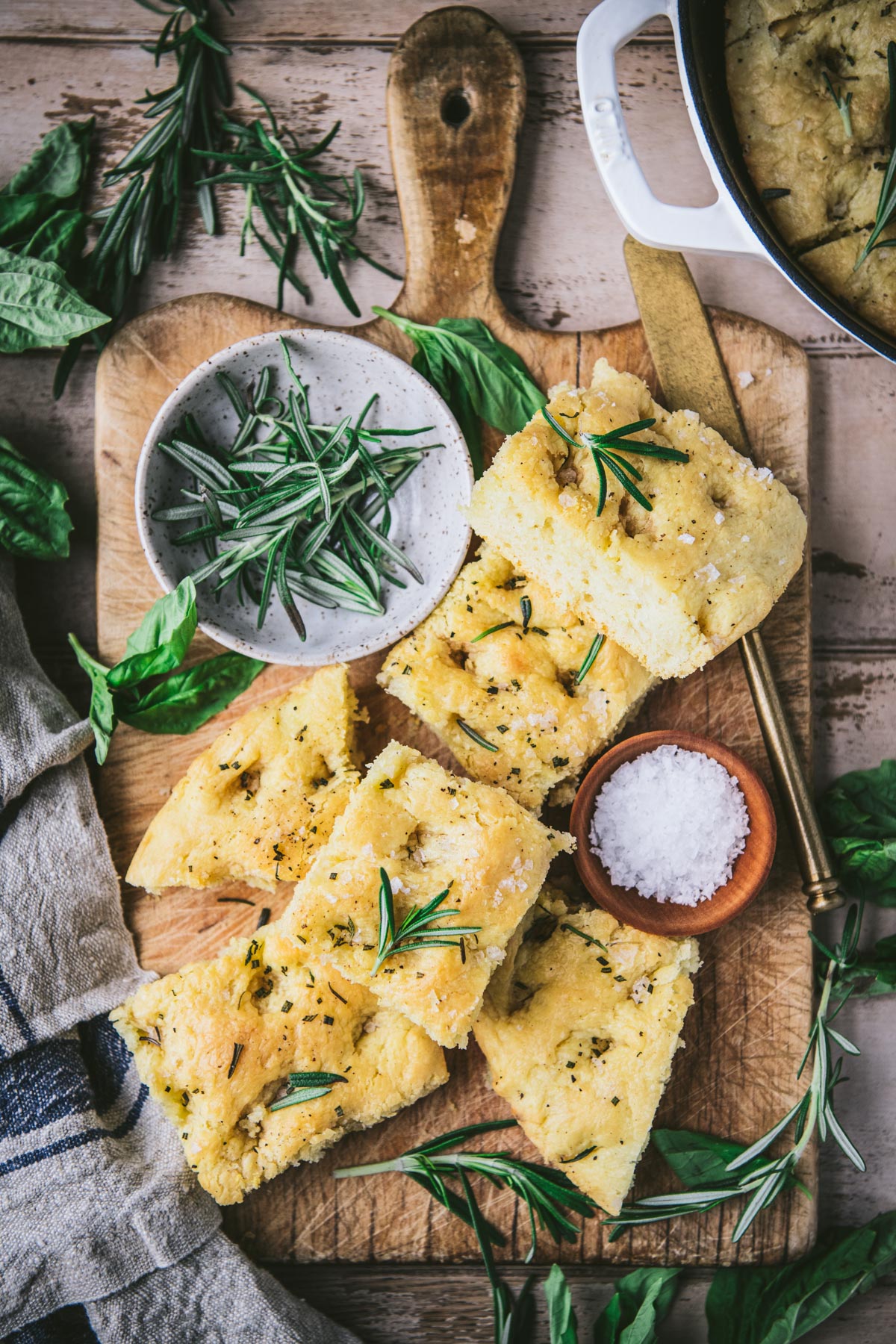
Cast Iron Focaccia Toppings
I’ve kept this recipe simple with just classic toppings of rosemary, flaky sea salt, and black pepper. The options are endless, though! Add any toppings that you like, such as:
- Garlic
- Parmesan cheese (add before or after baking)
- Caramelized onions
- Thinly sliced raw onions (add before baking)
- Sun-dried tomatoes
- Pesto (spread on top or use for dipping after baking)
- Sliced tomatoes
- Additional herbs such as thyme, oregano, basil or parsley
- Olives
- Mushrooms
- Mozzarella cheese
- Crushed red pepper flakes (for spicy kick!)
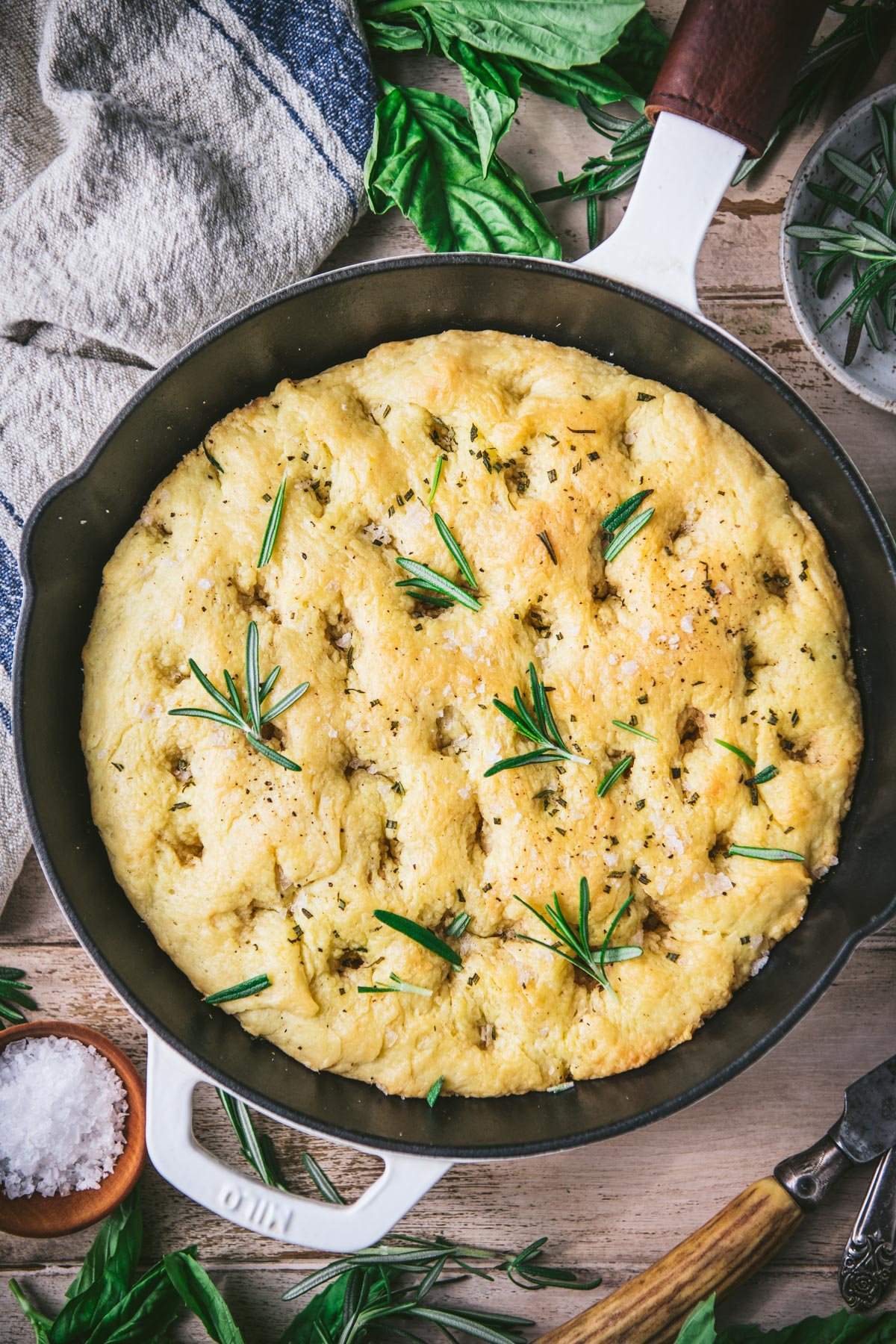
Preparation and Storage Tips
- Make Ahead: Focaccia is a convenient dough that can be made in advance. To do so, spread the dough in the skillet as instructed. Cover the dough tightly and let it rest in the refrigerator for up to 24 hours. When ready to bake, remove the dough from the fridge. Let it rest at room temperature for about 30 minutes while you preheat the oven and prepare the toppings.
- How to Freeze Focaccia Dough: After the dough rises in the bowl, punch it down to release the air, coat it with a little olive oil, then cover and freeze for up to 3 months. When ready to use, thaw the dough in the refrigerator overnight. Once thawed, remove the dough from the refrigerator and allow to rest for 30 minutes on the counter. Press the dough into the skillet and continue with the recipe instructions.
- How to Store Cast Iron Focaccia Bread: The bread is at its best when served the same day that it’s baked. You can bake it a few hours in advance and keep the bread at room temperature until serving. After a few hours, you’ll need to store the bread in an airtight container. The focaccia will lose some of its crispness, but it will last at room temperature for 2-3 days. You can also freeze the leftover bread for up to 3 months.
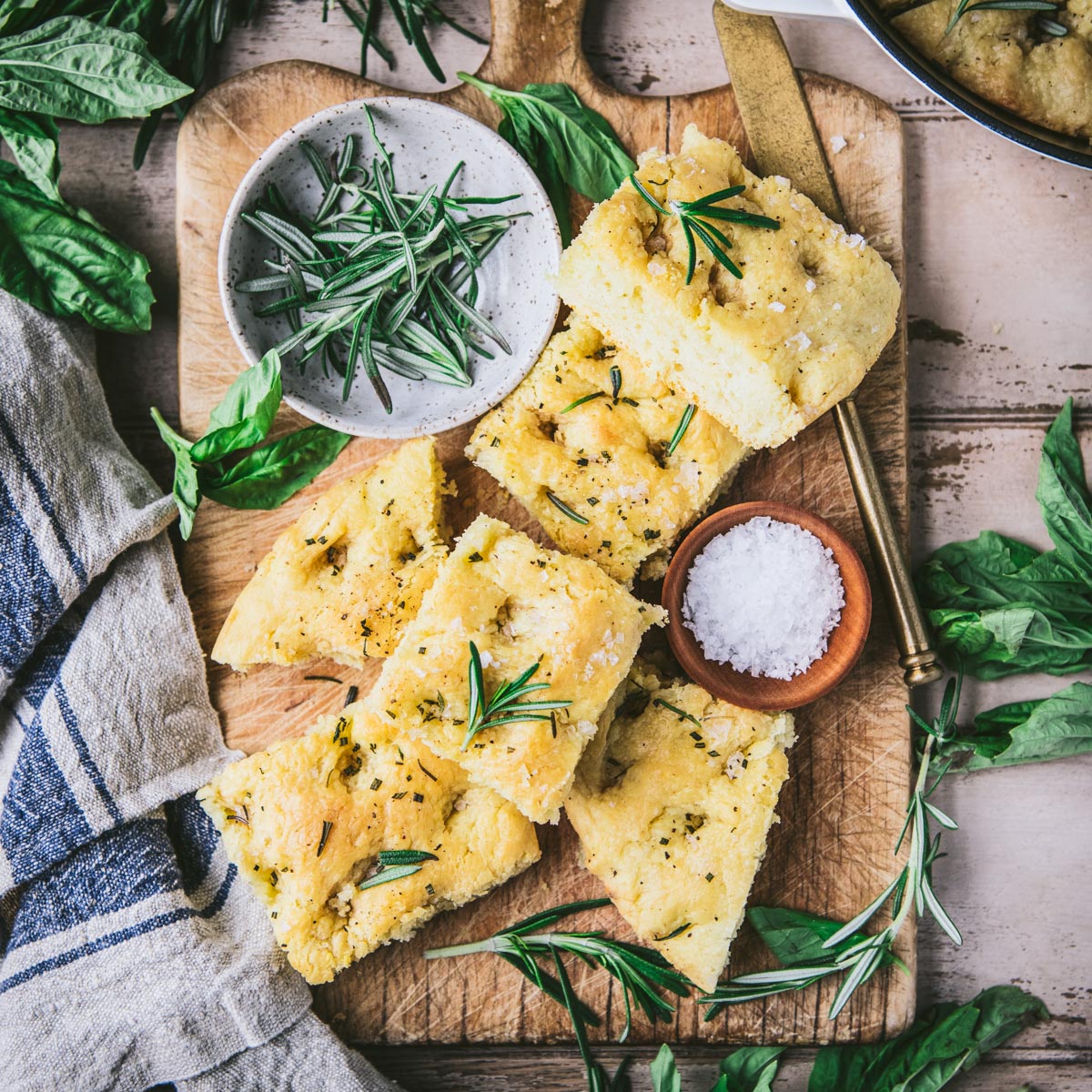
Recipe Variations
- Don’t have a stand mixer? You can stir together this no-knead dough with a spatula or wooden spoon.
- To serve a larger group, double all of the ingredients and bake the focaccia in a large, rimmed baking sheet.
- Use just about any of the suggested toppings above. We keep it simple with salt, pepper, and rosemary, but you can get creative with other fresh herbs, veggies, and cheeses. Focaccia art is a real thing!
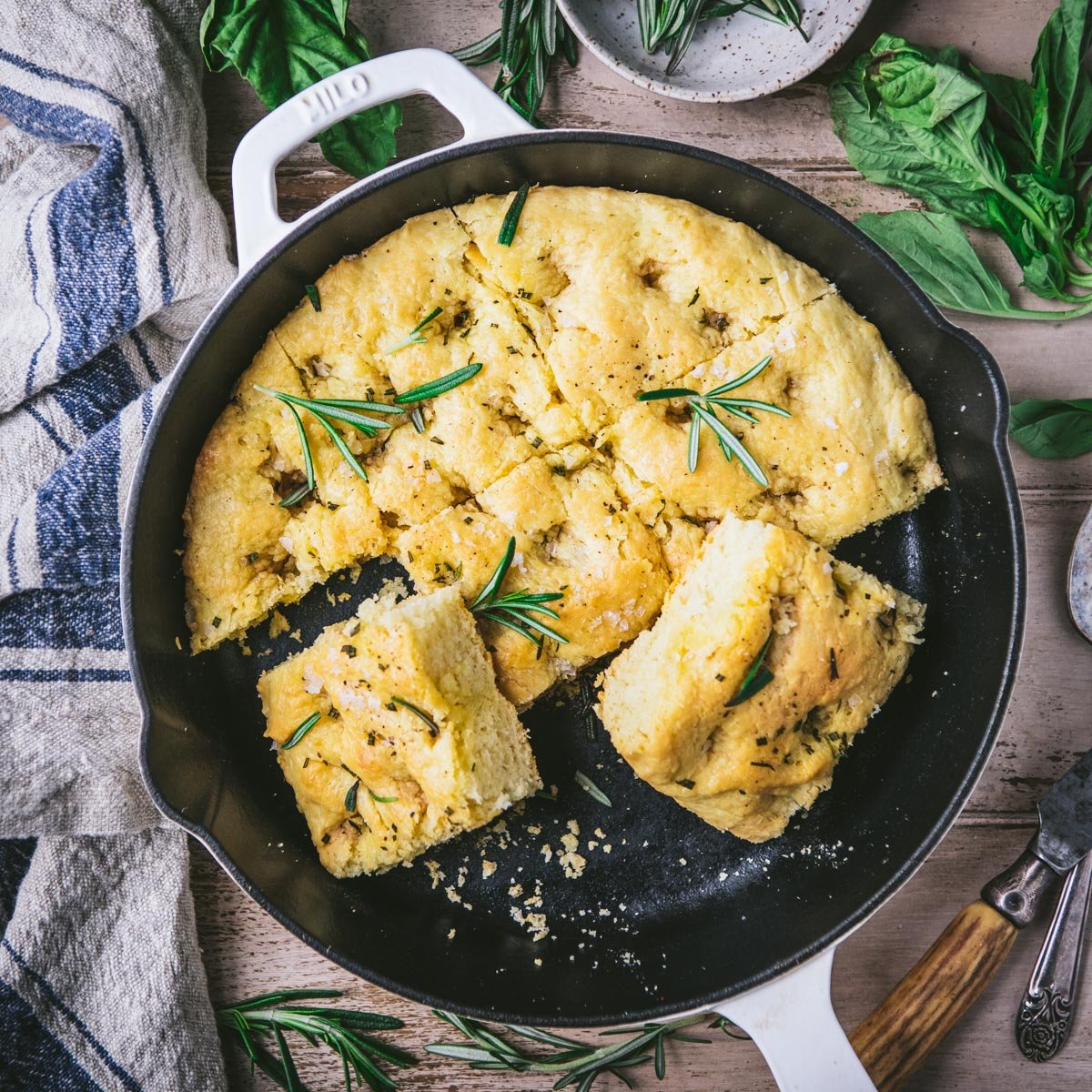
Tips for the Best no Knead Focaccia Recipe
- Make sure that your “warm water” is about 110°F. If it’s too cool, the water will not activate the yeast. Anything hotter than about 130°F will kill the yeast.
- Focaccia gets a lot of its flavor from all of that olive oil, so it’s important to use a high-quality olive oil that actually tastes good. I recommend a really nice extra-virgin olive oil.
- If you can, it’s best to wait to slice the focaccia until the bread has cooled some. If you slice it straight from the oven, steam will escape and the bread will dry out a bit. Not a disaster (it won’t ruin your bread), but something to keep in mind if you can be patient.
- Use a 10-inch cast iron skillet (rather than a larger 12-inch skillet). The smaller pan keeps the bread thicker and more fluffy.
- We love the texture and flavor of these Maldon sea salt flakes on top of the bread, but coarse kosher salt will also work!
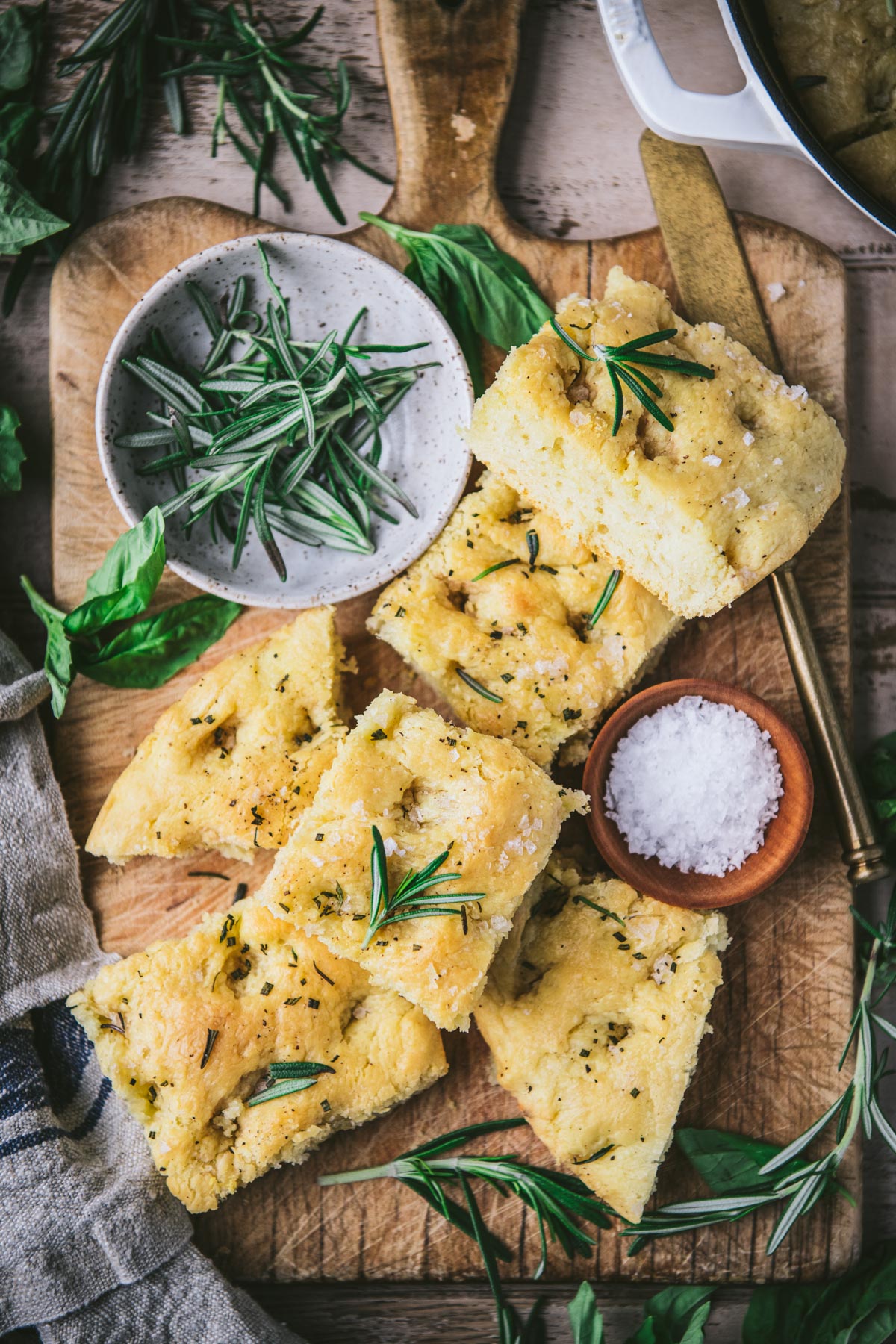
More Homemade Bread Recipes to Try
Homemade Breadsticks {Olive Garden Copycat}
3 hours hrs 37 minutes mins
Molasses Oatmeal Soda Bread
1 hour hr
Dutch Oven Bread {No Knead!}
3 hours hrs 50 minutes mins
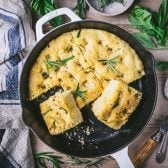
No-Knead Cast Iron Focaccia
Ingredients
- ¼ oz. dry yeast (about 2 ¼ teaspoons)
- Warm water, divided
- ¾ teaspoon sugar
- 2 tablespoons milk
- ½ cup plus 2 tablespoons olive oil, divided
- 2 ½ cups all-purpose flour, plus more as needed
- 1 ½ teaspoons kosher salt
- 1 tablespoon cornmeal
- Sea salt flakes (or extra kosher salt), for topping
- ½ teaspoon ground black pepper
- 1 ½ teaspoons minced fresh rosemary
Instructions
- Place yeast, ½ cup of warm water, and the sugar in a large mixing bowl on a stand mixer fitted with a dough hook. Let the mixture sit for about 10 minutes, until the yeast is foamy. Add 6 more tablespoons of warm water and the milk.
- Mix on low speed for about 2 minutes. Add 6 tablespoons of the olive oil and mix for 1 minute.
- Gradually add the flour, giving it a chance to incorporate into the mixture. Mix in the kosher salt.
- Transfer dough to a large, greased bowl and cover with a damp dish towel or plastic wrap. Let the dough rise in a warm place for 1 – 1 ½ hours, or until the dough has doubled in size.
- Sprinkle cornmeal in a 10-inch cast iron skillet. Punch down the dough, then spread in the prepared skillet. Rub olive oil on your hands before pressing the dough into the pan (this will prevent the dough from sticking to you). Let the dough rest (uncovered) for an additional 30 minutes.
- Meanwhile, preheat oven to 450°F.
- Use your fingertips to make indentations on top of the raised dough. Drizzle the remaining ¼ cup of olive oil over top, using your fingers to spread the oil all over the top of the bread (especially in those little dimples). Sprinkle flaky sea salt (or additional kosher salt), pepper, and fresh rosemary on top.
- Bake until golden brown, about 20-22 minutes.
Notes
- Make sure that your “warm water” is about 110°F. If it’s too cool, the water will not activate the yeast. Anything hotter than about 130°F will kill the yeast.
- Focaccia gets a lot of its flavor from all of that olive oil, so it’s important to use a high-quality olive oil that actually tastes good. I recommend a really nice extra-virgin olive oil.
- If you can, it’s best to wait to slice the focaccia until the bread has cooled some. If you slice it straight from the oven, steam will escape and the bread will dry out a bit. Not a disaster (it won’t ruin your bread), but something to keep in mind if you can be patient.
- Use a 10-inch cast iron skillet (rather than a larger 12-inch skillet). The smaller pan keeps the bread thicker and more fluffy.
- We love the texture and flavor of these Maldon sea salt flakes on top of the bread, but coarse kosher salt will also work!
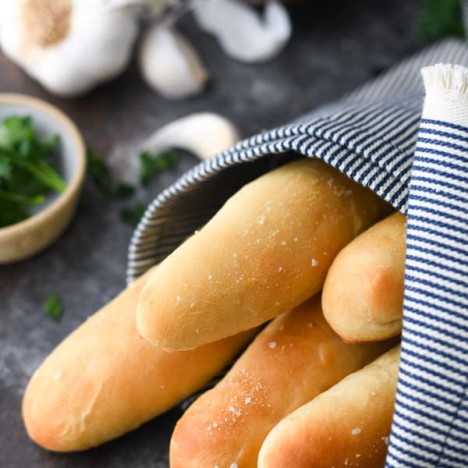
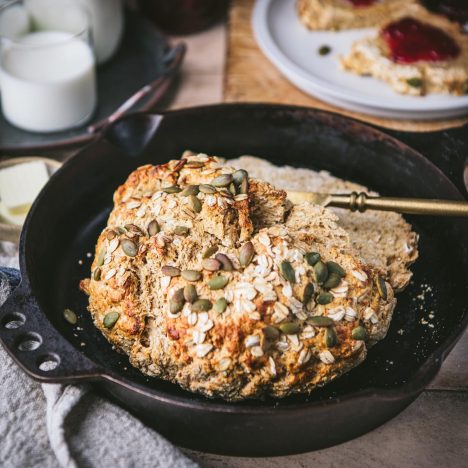
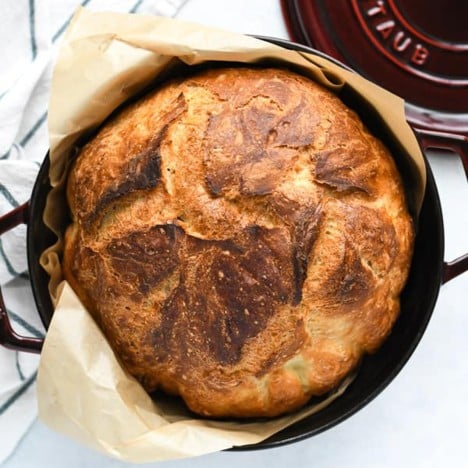
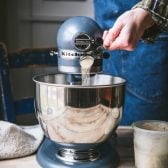
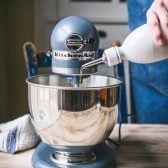
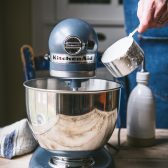
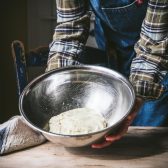
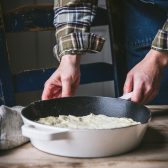
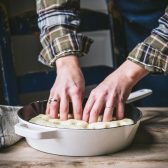
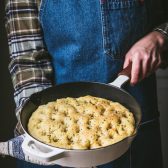

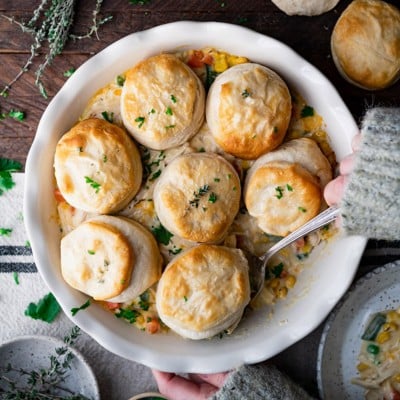
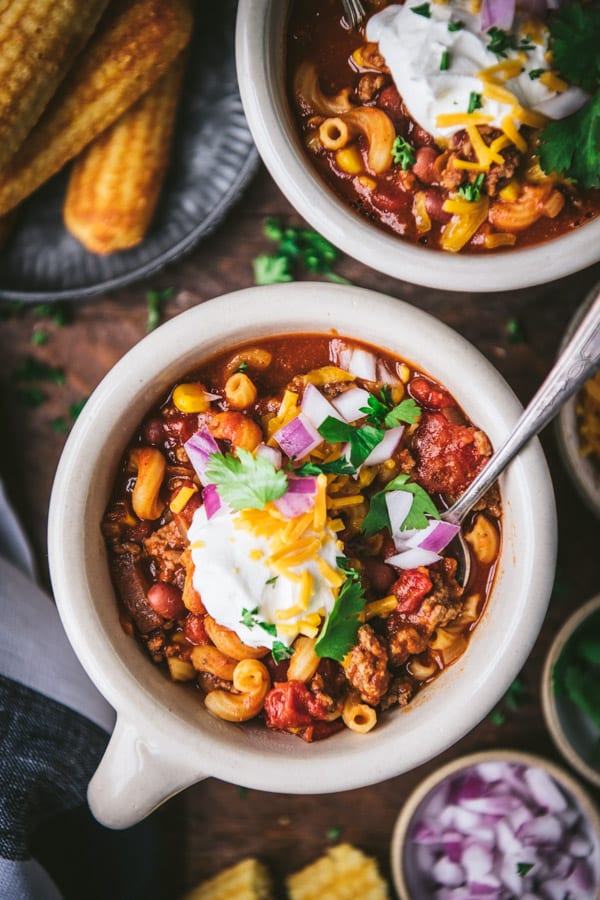
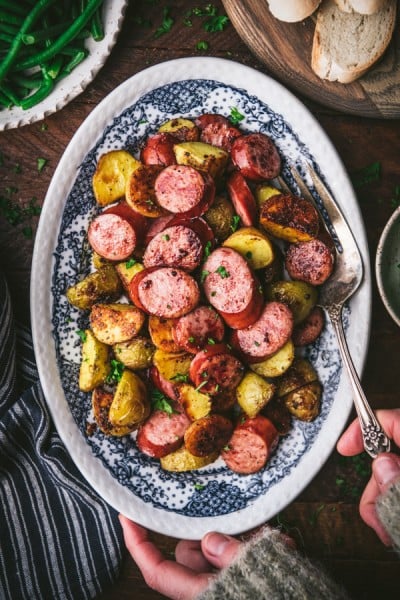








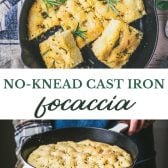
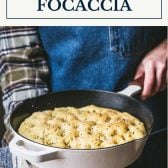
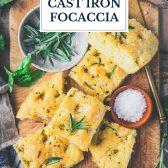
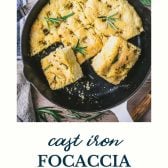
5 stars! There are only two of us and I placed the leftovers in the fridge. When I took them out, I cut in small slices, toasted them and they were wonderful. Thank you.
Thank you, Janet! We’re so happy to hear this.
Just curious, what brand of olive oil do you use for this recipe?
Hi, Beverly! I’m not too particular about specific brands. I usually get a good-quality brand from the grocery store. At the moment, I’m using California Olive Ranch brand: https://www.californiaoliveranch.com/collections/olive-oils